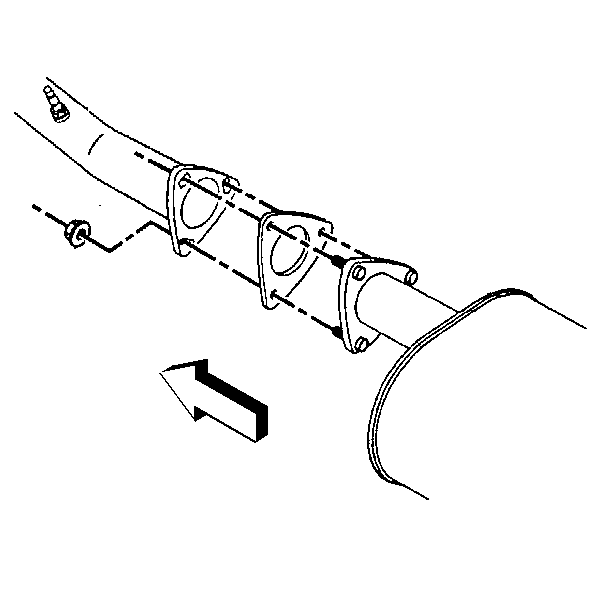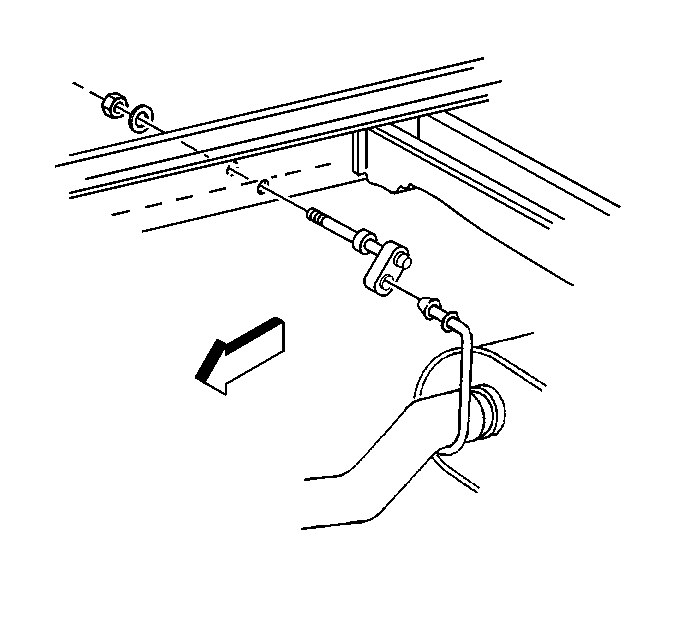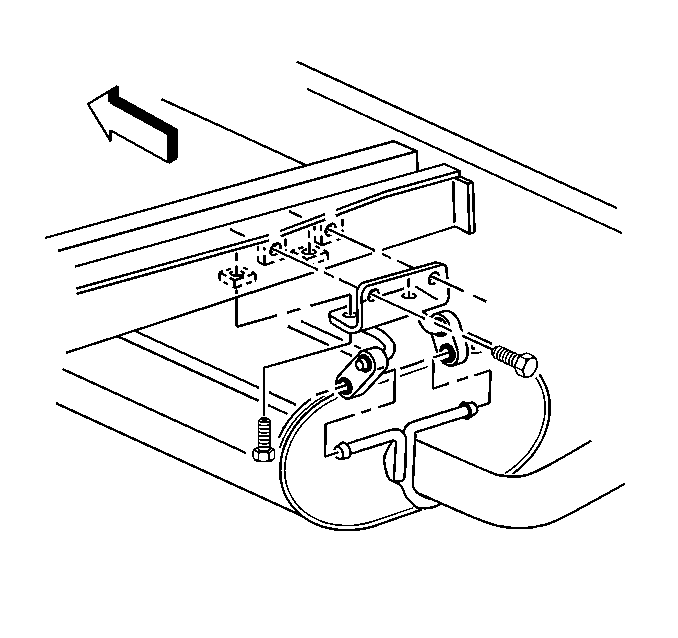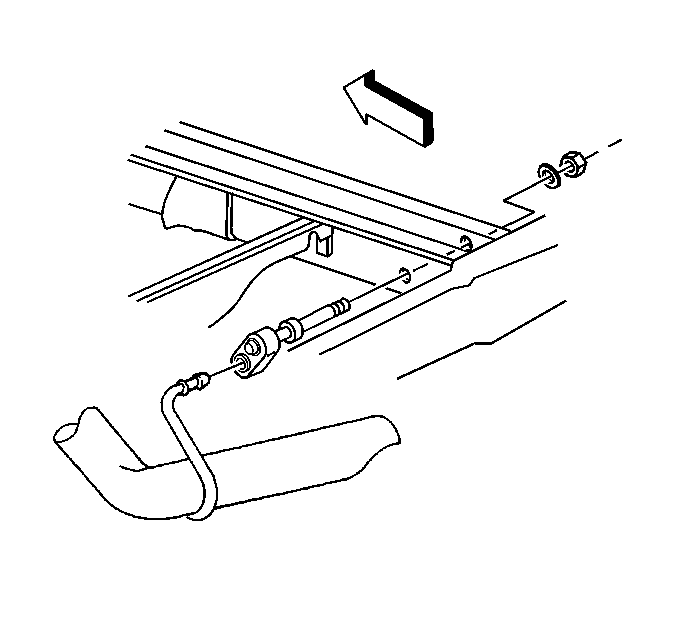Removal Procedure
Caution: Always wear protective goggles and gloves when removing exhaust parts as falling rust and sharp edges from worn exhaust components could result in serious personal injury.
Caution: In order to avoid being burned, do not service the exhaust system while it is still hot. Service the system when it is cool.
Notice: When jacking or lifting the vehicle from the frame side rails, be certain lift pads do not contact the three-way catalytic converter as damage to the converter will result.
An accumulation of dirt and corrosion may make removing exhaust components difficult. Applying a penetrating oil on the threads of the bolts may assist in the removal of these components.
- Raise the vehicle.
- Support the vehicle with safety stands.
- Support the muffler assembly.
- Remove the three nuts connecting the muffler assembly to the catalytic converter assembly.
- To aid in the removal of the muffler assembly, lubricate the rubber hangers with rubber lubricant GM P/N 12345884.
- Remove muffler assembly from the rear hanger.
- Remove the muffler assembly from the tailpipe hanger.
- Remove the muffler assembly from the vehicle.


Remove the muffler assembly from the front hanger.


Installation Procedure
Notice: Replacement of exhaust system parts must be OEM standard to ensure that the vehicle operates as designed.
When installing exhaust components, inspect the exhaust system for proper alignment. Misaligned components commonly cause rattles, noise and vibrations in the exhaust system. During system alignment, leave all of the bolts or nuts loose, until all of the parts are properly aligned. After properly aligning the parts, tighten the bolts or nuts from the front to the rear.
In order to maintain the alignment of the exhaust system, replace any damaged exhaust system hangers, hanger brackets, and clamps.
Important:
• When exhaust system service requires removing and replacing an
oxygen sensor, refer to
Heated Oxygen Sensor Replacement
in Engine Controls. • Replace the tailpipe when replacing the muffler. • Always use new nuts when installing the exhaust pipe to the exhaust
manifold. • Before installing the new nuts, clean the exhaust manifold stud
threads with a wire brush.
- To aid in the installation of the muffler assembly, lubricate the rubber hangers with rubber lubricant GM P/N 12345884.
- Connect the muffler assembly to the tailpipe hanger.
- Connect the muffler assembly to the rear hanger.
- Connect muffler assembly to the front hanger.
- Install the three nuts to connect the muffler assembly to the catalytic converter assembly.

Install the muffler assembly into the vehicle.



Notice: Use the correct fastener in the correct location. Replacement fasteners must be the correct part number for that application. Fasteners requiring replacement or fasteners requiring the use of thread locking compound or sealant are identified in the service procedure. Do not use paints, lubricants, or corrosion inhibitors on fasteners or fastener joint surfaces unless specified. These coatings affect fastener torque and joint clamping force and may damage the fastener. Use the correct tightening sequence and specifications when installing fasteners in order to avoid damage to parts and systems.
Tighten
Tighten the nuts to 40 N·m (30 lb ft),
